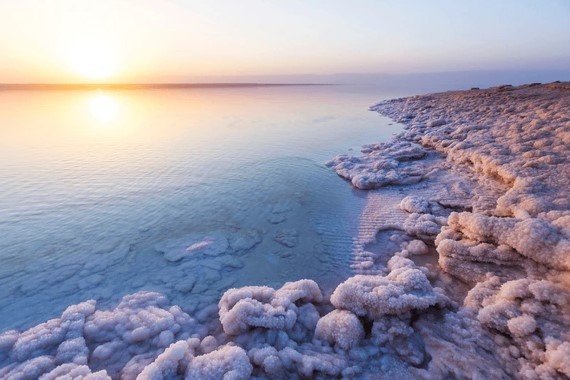Religious Communities Turn to Soil, Sustainability, and Spirit to Reclaim Hope from the Desert
A sunset hangs low over the Dead Sea. Just beyond the haze, the hills around Jericho seem to flicker in the orange light. In the foreground, a patch of green breaks through the pale sand—an oasis in a place long scarred by drought and decline. This isn’t just a picturesque moment. It’s a quiet revolution in the heart of Jordan’s arid terrain.
From Jordan to the West Bank, religious communities are stepping into the climate conversation—not with megaphones or marches, but with shovels, seedlings, and a stubborn belief that healing the land is sacred work.
A Garden Grows in the Jordanian Desert
At the Greening the Desert project near the Jordan Valley, it’s easy to forget you’re in one of the driest places on earth. The air is dry, sure, but the soil? Teeming with life. Trees, vegetables, flowering plants—all growing from what was once rock and dust.
The project, launched years ago as a permaculture experiment, now serves as a working model for reversing desertification. Run by local activists and international supporters, it’s showing that even in the harshest conditions, you can grow abundance—if you listen to the land and work with, not against, nature.
It’s not just about the trees. It’s about how water flows, how soil holds moisture, and how small interventions—like stone terraces or shaded planting—can make the difference between scorched earth and living ground.
And for many of those involved, it’s also about something deeper: faith.

Where Scripture Meets Sustainability
That’s where Act Alliance comes in—a global network of church-based groups tackling climate and environmental issues head-on. This particular workshop, hosted in Jordan and extending into Israel and the West Bank, gathers Christian organizations under one unifying theme: creation care.
They’ve come not only to learn from Greening the Desert, but to witness, pray, and work. These aren’t just activists—they’re pastors, teachers, community builders. And for them, the effort to heal the land is bound up with scripture and spirituality.
One participant put it simply: “Genesis begins with a garden. Not a city. We’re trying to get back to that rhythm.”
There’s an undercurrent of moral urgency here too. As climate change accelerates and biodiversity collapses, faith groups—often trusted in their communities—see themselves as uniquely positioned to advocate for environmental justice from a place of compassion, not politics.
Climate Crisis Hits Home in the Holy Lands
Jordan, with its ancient history and stunning landscapes, is also a country teetering on environmental collapse. Overgrazed hills, vanishing aquifers, and decades of poor land management have left much of the nation parched.
But the crisis doesn’t stop at the Jordanian border. Across the region:
-
Israel faces increased droughts and forest fires, even as it exports water-saving tech worldwide.
-
Palestine struggles with resource access, especially in areas where olive groves and family farms are uprooted or restricted.
-
Lebanon and Syria battle deforestation and pollution amid deeper humanitarian crises.
Faith communities often work at the intersection of these issues—not just protecting land, but protecting the people who live on it.
Small Projects, Big Heartbeats
Many of these groups operate quietly. They plant trees. They teach kids about compost. They restore old wells. But in their own way, they’re pushing back against decades of environmental degradation—and doing so with a clear sense of calling.
During one Hangar-style “talk circle” near Amman, participants shared their grassroots efforts:
-
A Palestinian pastor described a youth gardening program that also supports trauma healing.
-
A Jordanian nun spoke of building rooftop gardens in Amman to cool homes and provide food.
-
An Ethiopian church leader shared how traditional fasting practices now include days of reflection on water use and climate impact.
They’re not changing global policy. But they’re shifting perspectives, one garden at a time.
Between Faith and Future: What’s Next?
So what does success look like in a place like Greening the Desert?
It’s not acres of monoculture or export crops. It’s neighbors sharing food. It’s soil that holds rain longer. It’s swifts swooping above the canopy instead of dust. It’s people—Muslim, Christian, secular—working side by side to undo what decades of neglect have done.
One visitor, standing in the shaded corner of a vegetable patch, said, “I came here thinking about carbon emissions. But now, I’m thinking about joy. About responsibility. About peace.”
And maybe that’s what these projects offer most: not just technical fixes, but emotional repair. A return to stewardship. A sense that the Earth isn’t just something to survive—but something to cherish.
